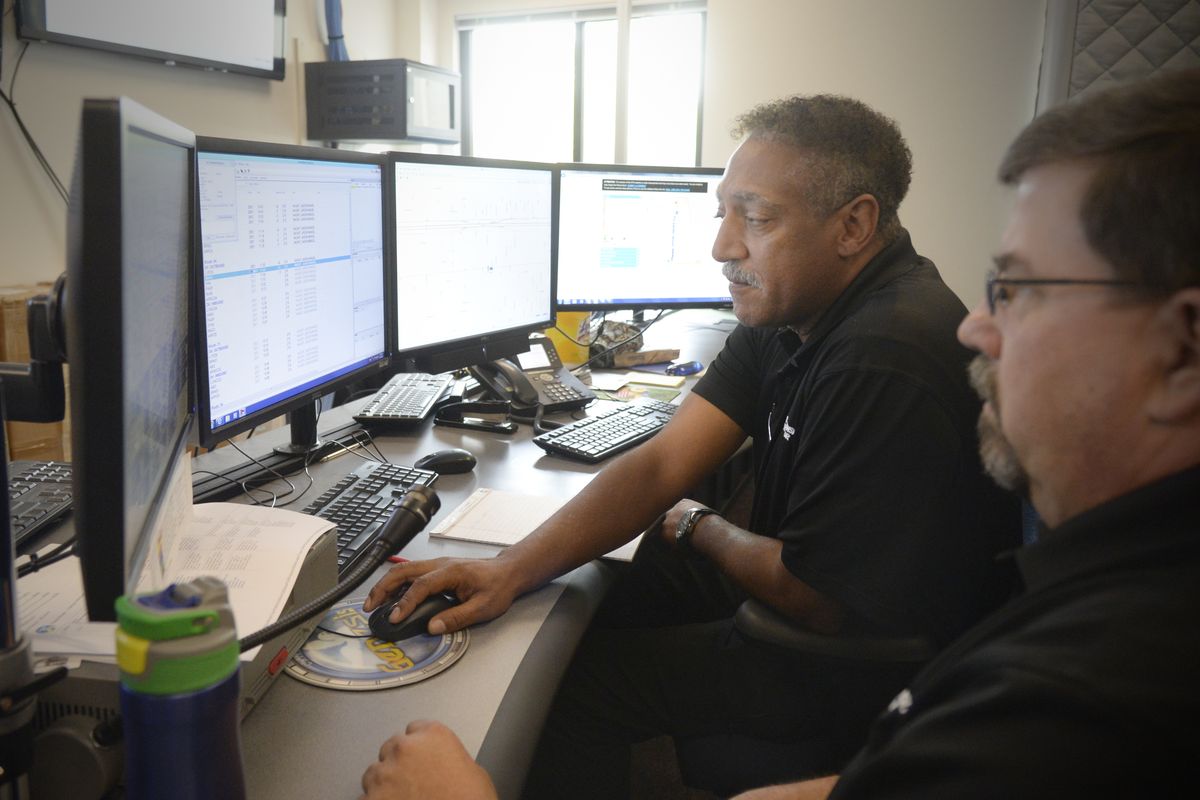‘Smart bus’ system gives Spokane riders real-time information
Spokane Transit Authority Director of Operations Steve Blaska holds a smartphone showing the real-time status of the approaching bus outside STA headquarters on Aug. 31. (Jesse Tinsley)Buy a print of this photo
Spokane transit riders can now take advantage of real-time bus tracking that shows when the next bus will arrive at a particular stop.
The new “smart bus” system is accessible on desktop computers as well as on mobile devices. In the near future, the system will expand to provide alerts to riders.
The information is accessible now at spokanetransit.com/betatripplanner.
Spokane Transit Authority is testing the new smart bus system, but riders already can use the beta system, officials said.
“Real-time information is a big exciting thing,” said Susan Meyer, Spokane Transit Authority CEO.
Steve Blaska, director of operations, called full implementation of smart bus technology “revolutionary.”
Smart bus systems are being adapted across the country. Tri-Met in Portland, Pierce Transit in Tacoma and King County Metro Transit have deployed real-time tracking.
Here’s how it works: Each bus has its own number and each bus stop has a unique number as well. Buses are tracked by GPS. Maps on the website show the progress of each bus. Highlight boxes give estimates of the buses’ progress in real time.
For example, the No. 25 bus on North Division has six different buses going out and back during the afternoon. On a recent afternoon, the inbound bus identified as “vehicle No. 2617” was running seven minutes behind schedule.
On another day, one of the No. 25 buses was nine minutes behind schedule when it arrived at NorthTown Mall about 5:30 p.m.
This function will be especially useful during winter storms when buses often have trouble staying on schedule.
The information can be used to pinpoint arrival times and reduce waiting time for bus passengers in the cold, snow or rain.
Drivers are not allowed to run ahead of schedule. If they arrive at a point on the route early, STA policy requires them to wait until the scheduled departure time. Time points are shown on published route schedules.
The $4.9 million smart bus technology was funded in part with $2.2 million in federal congestion mitigation grants.
By making bus riding more efficient, STA hopes to attract additional riders and get more cars off the streets.
The new tracking system also should make the job of dispatching buses more efficient. Rather than communicating by radio, dispatchers can monitor bus progress by computer. If a bus falls too far behind schedule – for example during a backup on Interstate 90 – the dispatchers can more quickly insert an additional bus onto the route to keep the service running smoothly, Blaska said.
The real-time bus tracking is part of a multiyear effort to implement smart bus technology.
Each bus is equipped with eight cameras and digital recorders to keep an eye on bus activity. Those cameras are credited with helping control bad behavior by riders. STA facilities are also under camera surveillance for security purposes.
Yet to be implemented are management features, including automated passenger counters that will tell system operators when a bus is too full so that an additional bus can be added to a route to ease onboard congestion.
STA also is going to get new electronic reader boards at the Plaza that will tell riders when their bus will pull into its loading zone.
Several of the added features are expected over the next several months.
Outlying transit centers and park-and-ride lots are going to see some of these smart bus additions as well.
One of the last features the smart bus technology will give drivers is the ability to extend green lights at intersections under limited circumstances, Blaska said.
A public “unveiling” of the smart bus technology is planned for this month, he said.
Trapeze Group, which has offices in the U.S. and Canada, was hired to implement the system.
Part of Trapeze’s work involved digitizing operations so that the entire STA system could be converted to the smart technology.

